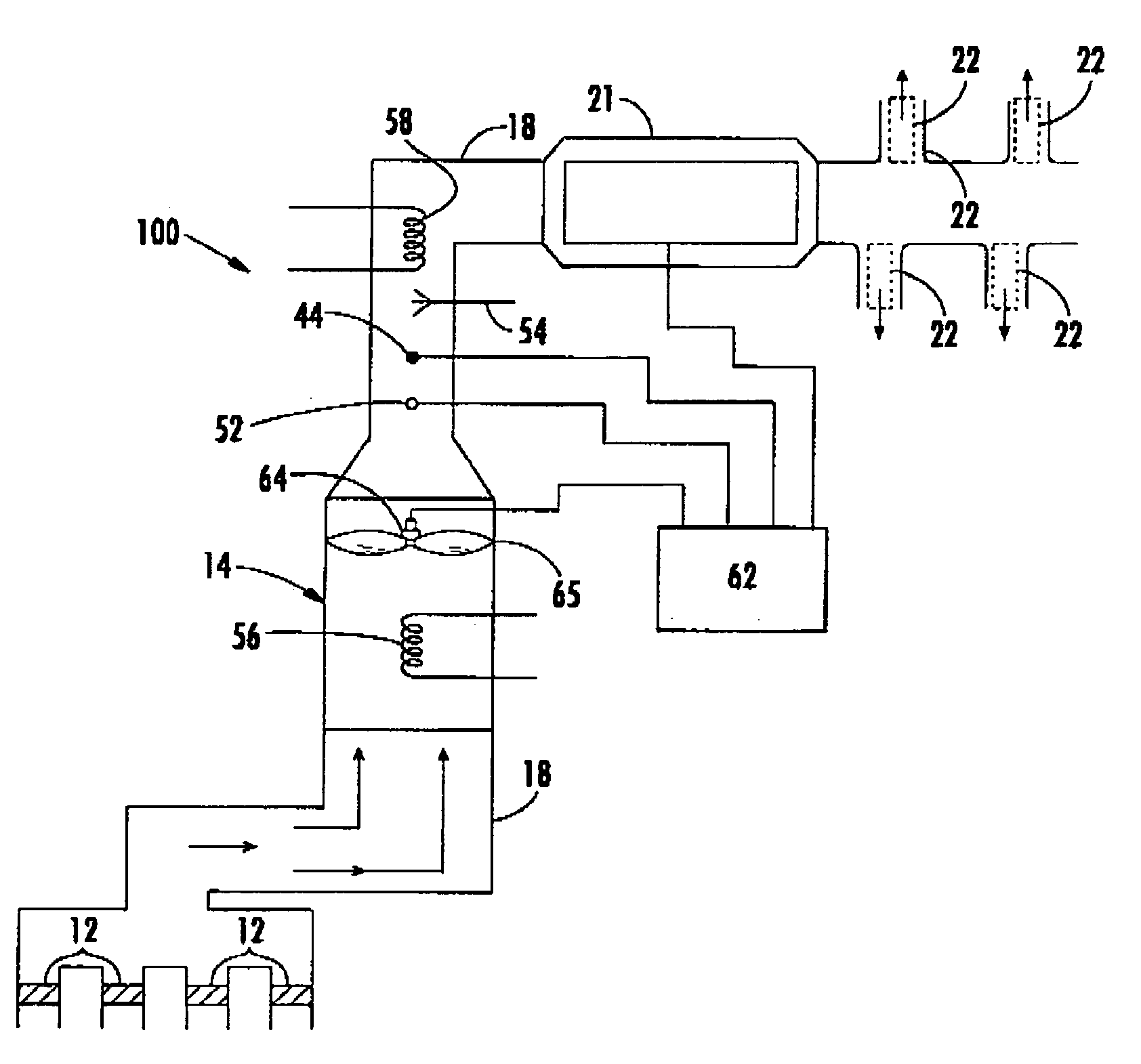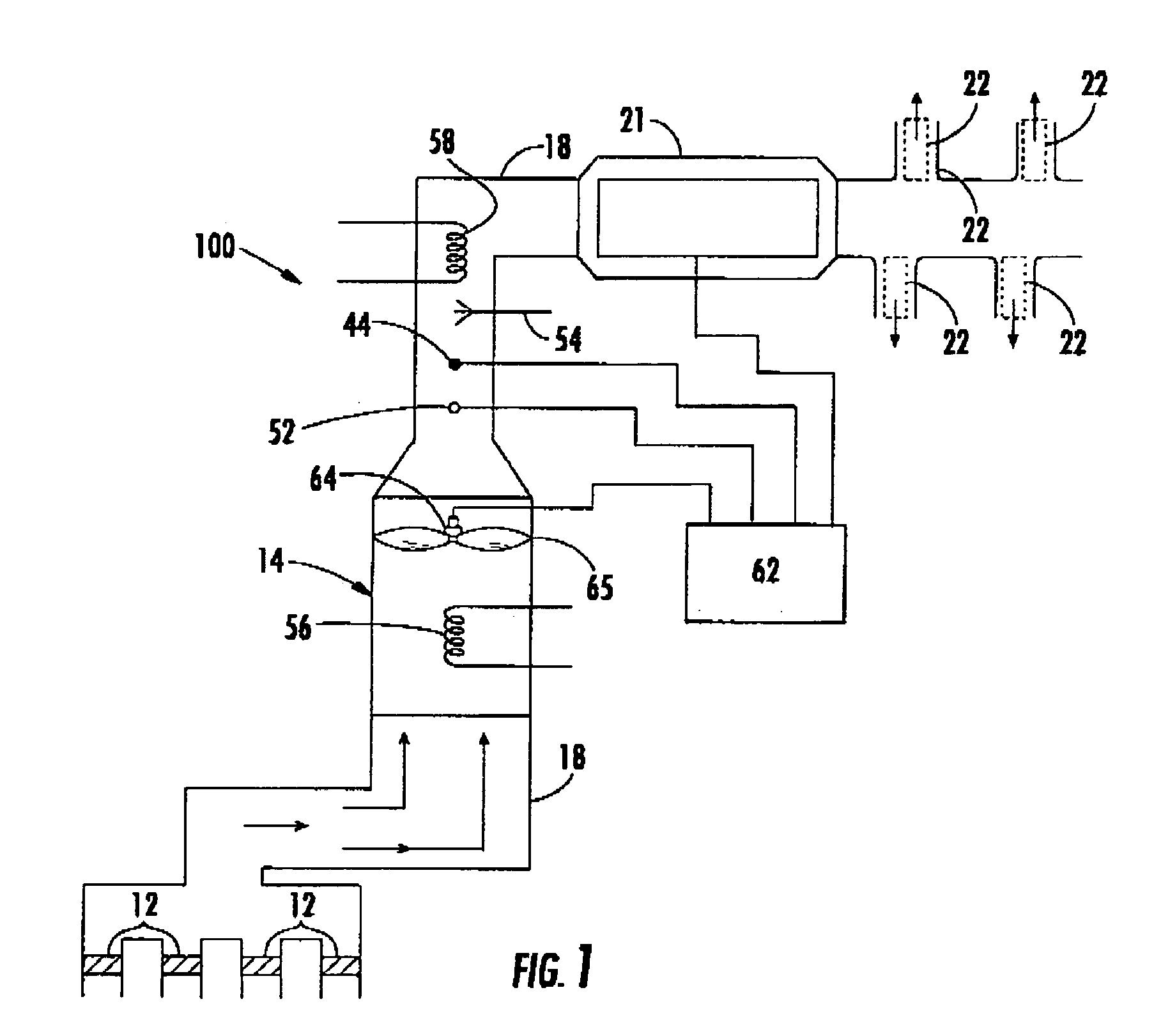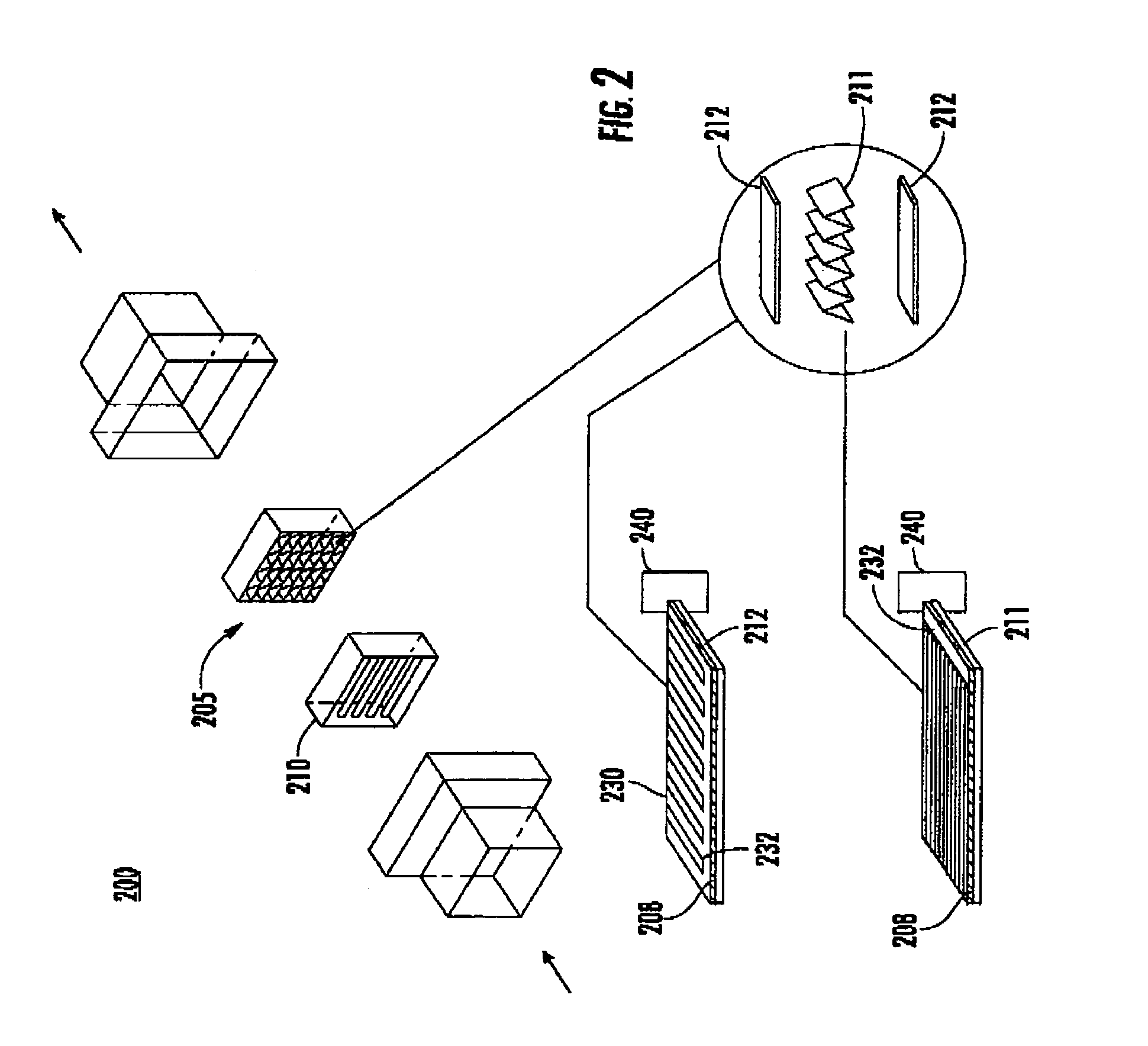Photoelectrochemical air disinfection
a technology of photoelectrochemical and air disinfection, which is applied in the field of system and method of disinfection of fluids, can solve the problems of contaminated indoor environment, low level toxic chemicals, and media breeding ground, and achieve the reduction of electron-hole recombination rate and hole recombination rate involving photogenerated electrons and holes, and increase the quantum efficiency of the photocatalytic oxidation process and the destruction rate
- Summary
- Abstract
- Description
- Claims
- Application Information
AI Technical Summary
Benefits of technology
Problems solved by technology
Method used
Image
Examples
Embodiment Construction
[0026]A photocatalytic reactor-based system and related method for disinfecting fluids containing microorganisms or chemical contaminants increases the speed and efficacy of contaminant destruction significantly compared to previous systems by significantly reducing the rate of hole-electron recombination reactions. In contrast to previous advanced photocatalytic-based systems such as U.S. Pat. No. 5,933,702 which requires minimum relative humidity levels of 40% or more to achieve reasonable rates for the photocatalysis process, the present invention can operate efficiently at much lower relative humidity levels because of the reduced recombination. Effectively a larger number of active reactive sites per unit photocatalyst particle are provided by the invention. Accordingly, the invention can be used even when relative humidity is less than about 30%, while still providing substantially complete disinfection of air. Although, the invention is generally applied to air or other gases...
PUM
| Property | Measurement | Unit |
|---|---|---|
| band gap energy | aaaaa | aaaaa |
| humidity | aaaaa | aaaaa |
| UV wavelength | aaaaa | aaaaa |
Abstract
Description
Claims
Application Information
 Login to View More
Login to View More - R&D
- Intellectual Property
- Life Sciences
- Materials
- Tech Scout
- Unparalleled Data Quality
- Higher Quality Content
- 60% Fewer Hallucinations
Browse by: Latest US Patents, China's latest patents, Technical Efficacy Thesaurus, Application Domain, Technology Topic, Popular Technical Reports.
© 2025 PatSnap. All rights reserved.Legal|Privacy policy|Modern Slavery Act Transparency Statement|Sitemap|About US| Contact US: help@patsnap.com



